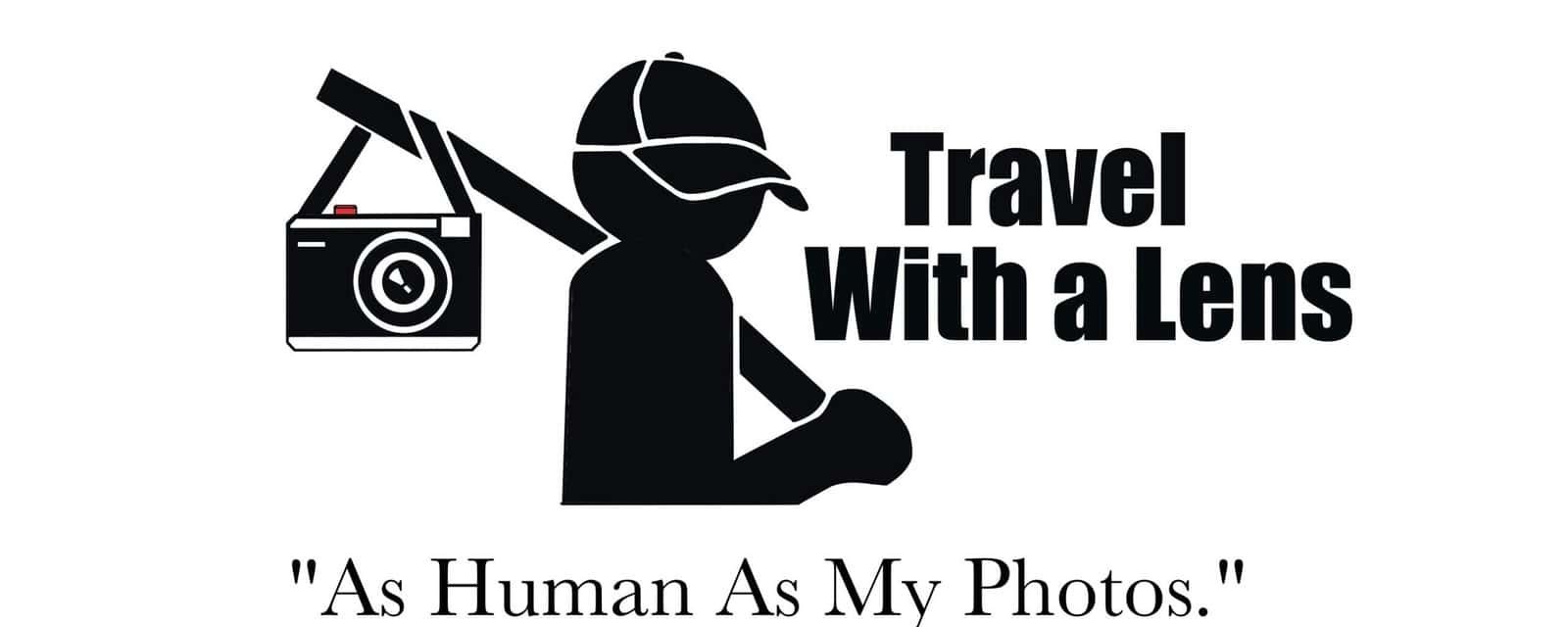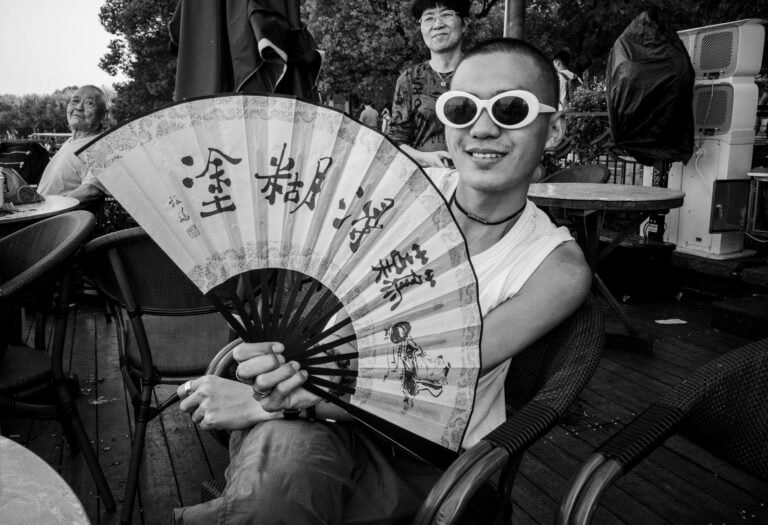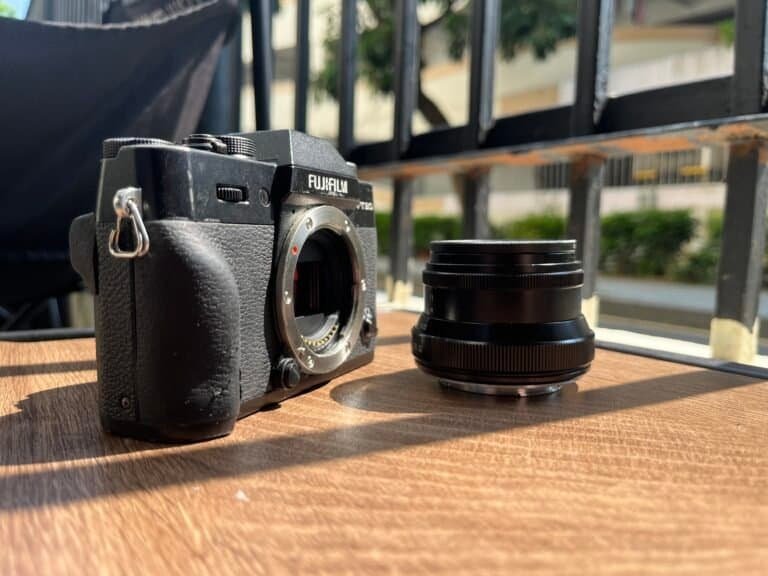Fujifilm X-T30 Review (An Honest One) 2025
*With no extra cost to you this post has affiliate links – if you buy something from MPB, I get a free coffee.
Changing cameras
Have you ever been in the situation where your main camera has broke? It happened to me after a day at the beach. So what would you do? I went out to buy the best camera I could afford. The X-T30 was my replacement camera. If my X-T1 (see review) had not come into contact with too much of the wrong kind of water, I would have never bought the Fujifilm X-T30.
So why did I buy it? I did what many of you might have done in the same situation, I bought the best I could afford. I bought it for the following reasons:
- The X-T2 at the time was too expensive
- The X-T30 was the right price
- I already had Fuji lenses
- I had gotten used to the Fujifilm system
The X-T30 looks just like a little baby X-T series camera, but I wont beat around the bush, it was all I could afford.
Fujifilm Wasn’t Always Popular
By this point Fujifilm has became perhaps the best established name amongst the average consumer and newer photographers. It’s been about ten years since I bought my XT-1, during this period Fujifilm has exploded in popularity as a brand, their latest 100 XVI is a perfect example of this mirrorless camera craze.
I have probably owned the my X-T30 for at least 6 years, so this article is going to be more of a retrospective look at this camera which has now become my main photography tool, especially since my Ricoh G III decided not to work function properly. The X-T30 has remained my most constant. So lets get on with this review.

Specs and Build
Like many of you, I don’t enjoy carrying around heavy cameras (although I have just bought a Nikon D600). At the time of buying the X-T30 I also considered the X-H1, which was a little bit older then and almost within my price range. However it just seemed so bulky compared to the X-T1, and for street photography general.
So with a heavy heart I bought the X-T30, it was cheaper and within my range, especially as I had 2 lenses already. Because I came from a X-T series and to be honest I saw it as step down.
That said its video features were much stronger and comparable to the X-T2 and X-T3. So needles to say it blew away the X-T1 in this regard. I’m not one for camera specs but lets compare the sensors:
- X-T1: 16.3-megapixel APS-C X-Trans CMOS II sensor
- X-T30: 26.1-megapixel APS-C X-Trans CMOS 4 sensor
Are specs important, well yes and no. They are important for brands and photographers who have certain professional needs, but for the rest of us I’m not sure. But we all fall into this trap especially when we are beginner photographers.
Sensor size is one of those. The specs above don’t tell the whole story. For example the X-T1 looks inferior, but it is in fact a very beautiful and special sensor. Not that the X-T30 isn’t. This camera produces beautiful images, with that baked-in-look that Fuji does so well. Simply use it to believe it, don’t always look at the specs alone.
Flip Up Screen & EVF
The LCD screen is this very rugged and it has not got any looser with many years of use. I find the images particularly strong or clear on the screen. Direct sunlight does affect it experience a little though. I have been playing around with an old Nikon D600 recently and boy I miss that mirrorless camera screen.
If however if I’m doing a long day of photography I will turn off the screen, as it chews through battery at a good rate. However… if you need to take a photo and you need to be low key, just open the screen, hold the camera and shoot from the horizontal flip screen. It’s a great way to shoot from the hip. Of course it’s also useful for image taking photos from low or awkward angles, like most cameras are.
The EVF is crisp and clear, although when in manual focus mode I don’t find that the peaking and other manual focus assists very clear or sharp. Which bugs when I use my manual lenses.
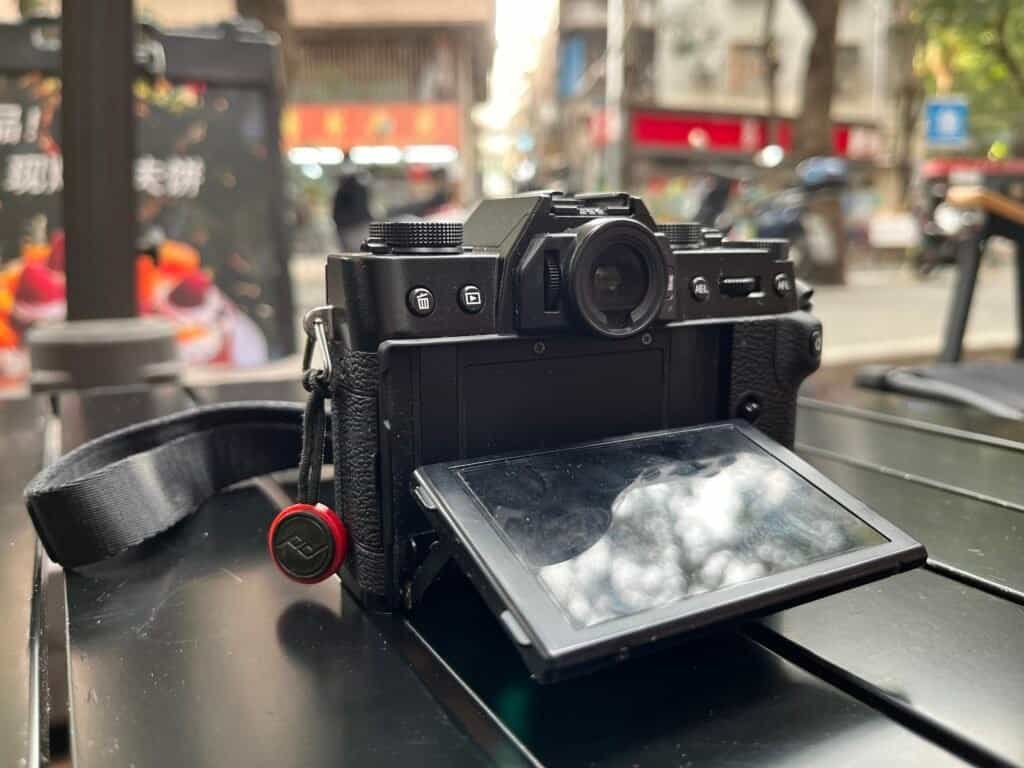
Joy Stick
I was concerned about the little joystick because I’m the kind of guy who will just throws his camera into a bag. However despite all my rough handling it is as good today as the day I bought it.
No Weather Sealing
I was concerned about the lack of weather sealing. But since my last experience I no longer get too close to large bodies of water with my cameras. If it rains I find shelter or just use an umbrella. If I were landscape photographer then weather sealing would be a must. Instead however I’m a street photographer / travel photographer so I am ok with it.
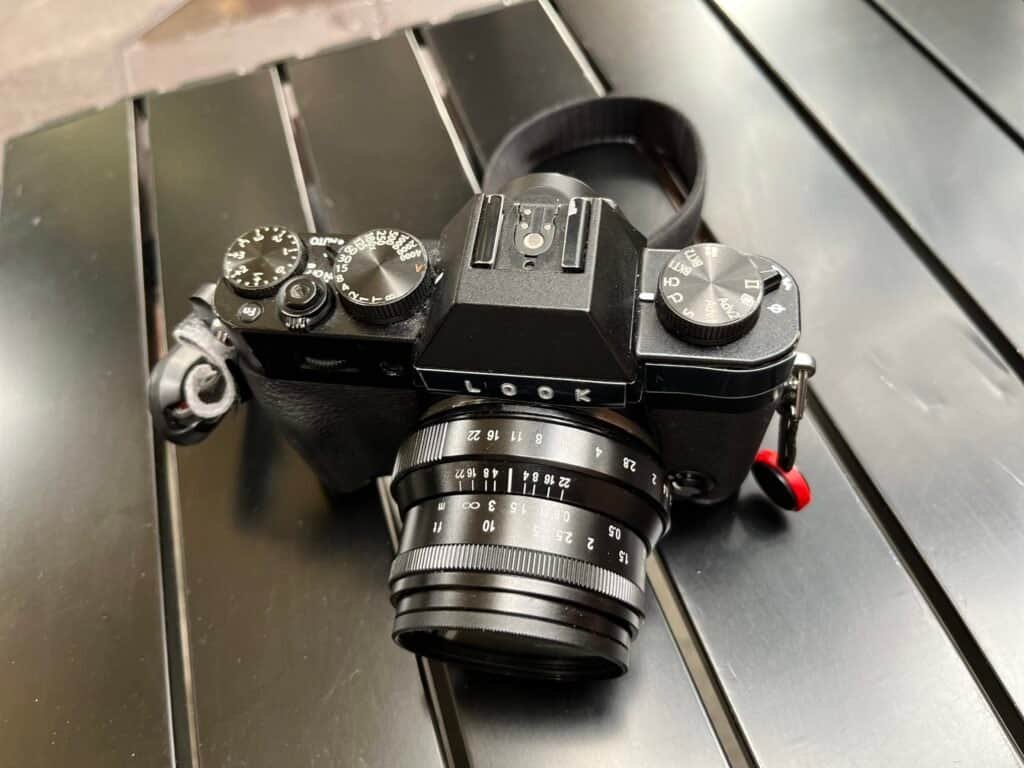
Ergonomics
This is the aspect of a camera I find most important, in any camera. Some cameras do scream to be picked up and used. That’s the exact feeling I have with Fujis (and Ricohs). The X-T30 is a great example of this.
Although far from a pocketable camera (although not far off) it feels great in the hand, and the grip even for my large hands feels comfortable, and the camera never gets too heavy. I love the dials becauuse I detest menu diving, it simply takes me out of the moment, which is the whole point of walking around with the camera in the first place.
On a obessive note, I also enjoy the manual feeling of Fuji’s more retro cameras. Reading the light, adjusting the exposure and shutter speed, enhances the overall camera experience for me. The X-T30 has fewer dials than my older Fuji, but it’s not a deal breaker by any means. In fact it has many more dials than some of the other Fujifilm models, and more easy access to dials than many other mirrorless cameras.
The X-T30 also has enough customisable options for function keys and dials, if your into mapping out the buttons and dials with your cameras.

Image Quality
Honestly, there’s not much to say about see image quality on the X-T30 it’s excellent. The Fujifilm X-T30 offers 16 different film simulations:
1. Provia/Standard
2. Velvia/Vivid
3. Astia/Soft
4. Classic Chrome
5. Pro Neg. Hi
6. Pro Neg. Std
7. Monochrome
8. Monochrome + Ye Filter
9. Monochrome + R Filter
10. Monochrome + G Filter
11. Sepia
12. Acros
13. Acros + Ye Filter
14. Acros + R Filter
15. Acros + G Filter
16. Eterna/Cinema
For me I shoot in RAW, and do all my editing on my iPad in using the Lightroom. I get the results I want there. I don’t really get this obession with recipies I much prefer to focus on the act or being there. But if this is you, all power to you.
Dynamic Range
It’s as good as you can expect from a smaller sensor. You learn to work with the light and embrace what you can’t adjust in your software of choice. The files are easier to handle with under exposed files than over exposed that’s for sure.
Video
I have shot 4K video on this camera and it looks fantastic. And the biggest limitation is the lack of in body stabilisation. However, if you are stills photographer like me that’s not really an issue.
Low Light
Again, it’s a small sensor. But the ISO performs well up to 1600. I don’t find the noise partically pleasing with Fuji cameras. But treat it like a APSC camera, use the available light when your in low light situations, and you should be fine. Get a 144 lens or 1.2 lens and that will make a big difference. These lenses can get though, so try an 3rd party manual lens. If you’re looking for good low light performance you can check out my reviews for the Canon 6D and the Nikon D600
Frame Rate
Don’t take this the wrong way, but I rarely spray and prey, I hate editing all those files. Actually recently working with the old Nikon 600 I’ve grown to enjoy the slow burst speed. Not that the X-T30 is slow, because it’s not. If looking for high burst speeds, look elsewhere but if you want to catch your fast moving toddler then its perfect for that.
Autofocus System
The X-T30 has reasonably good autofocus, I tend to use manual lenses have the time, the half a wide lens close up, As normal you will have to watch your shutter speed to avoid blur, but the actual autofocus in good lights is good. The darker the scene it struggles a little more, but that is to be expected.

Here is an example I shot at a trains station, people walking fast in good light.
Then another of the train speeding by and the scenery outside. I still think even in this situation it performed well enough.
For video I feel it also performs well, about it’s been a while since I have shot video on it.
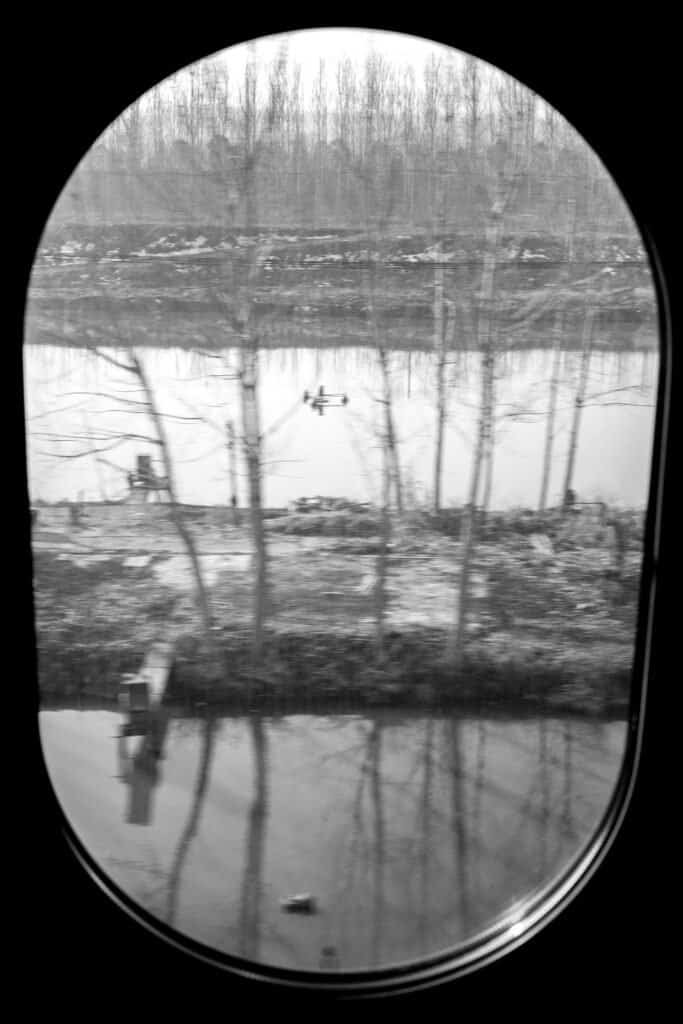
I will be the first to admit, that autofocus does come into handy with hurtling objects such as fleeting children and people participating in sports. I’m not a pro, so I have no idea how they think or what they do, but I would guess the autofocus might not be for them.
Battery Performance
It’s good enough if you’re out for the whole day take three to four batteries, take a power bank and charge via usb-c or alternatively a charger and charge a few at a time. Also get chargers and charge over night and you will be good. The main tip is turn off your LCD screen, use the EVF.
Things I don’t like
The biggest gripe I have is the Q button. I have heard people you can turn it off, but so far I have failed. I do have largish hands but everytime every time I shift the grip of my thumb, I push the little bugger and then the Q menu pops up. I wish it was placed somewhere else, or that there was an easy way to disable it. I’m sure I have missed a bunch of potentially internationally applauded images due to this annoying button. (if you believe that, you will believe anything).
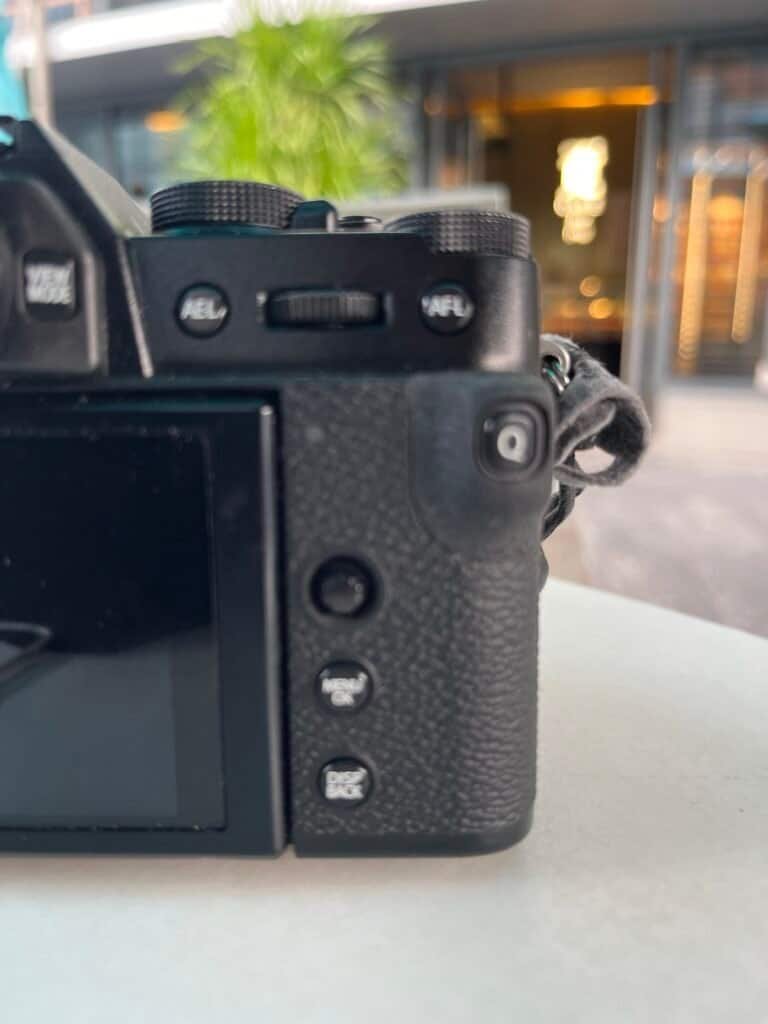
The Battery door on the older, XT-1 was much more secure. The battery door on the X-T30 flips open, seemingly at will. Especially when it knocking around in a bag and I pull it out. I have never had the problem of losing a battery or SD card, but it’s annoying and I always worry that the battery door will snap off. I treat my cameras like they are tools and not precious children so that’s always a concern.

One last thing. With the X-T1 the rubber peeled off fairly quickly, it has done so around the thumb grip with my X-T30. It was an easy fix, and it happened after many years of use.
It’s important to note however that Fujifilm are not alone in this, the Nikon 600 (not mine though) is reported to do this as well.
Final thoughts
Would I recommend anyone to buy this camera, absolutely, it’s gonna be pretty cheap secondhand now. Alternatively try the newer model the X-T30ii. They are both lightweight and compact, very fun to use.
My opinion has changed about this camera over the years. It went from feeling like temporary replacement to being my most used and reliable camera. I have dropped this little sucker quite a few times, never the camer or lenses have suffered.
I love this camera now, I’m not sure that would buy any of the X-T serious of cameras, for example X-T3 are bigger and heavier than the orginal. This camera is a little powerhouse, superly light weight, multi use and joy to use.
This camera in main has satisfied my gear acquisition syndrome, it take this camer with a lot. Its my first choice as travel camera. It’s not great for low light and thats why I now have the Nikon D600. The AF on the X-T30 is also easily good enough.
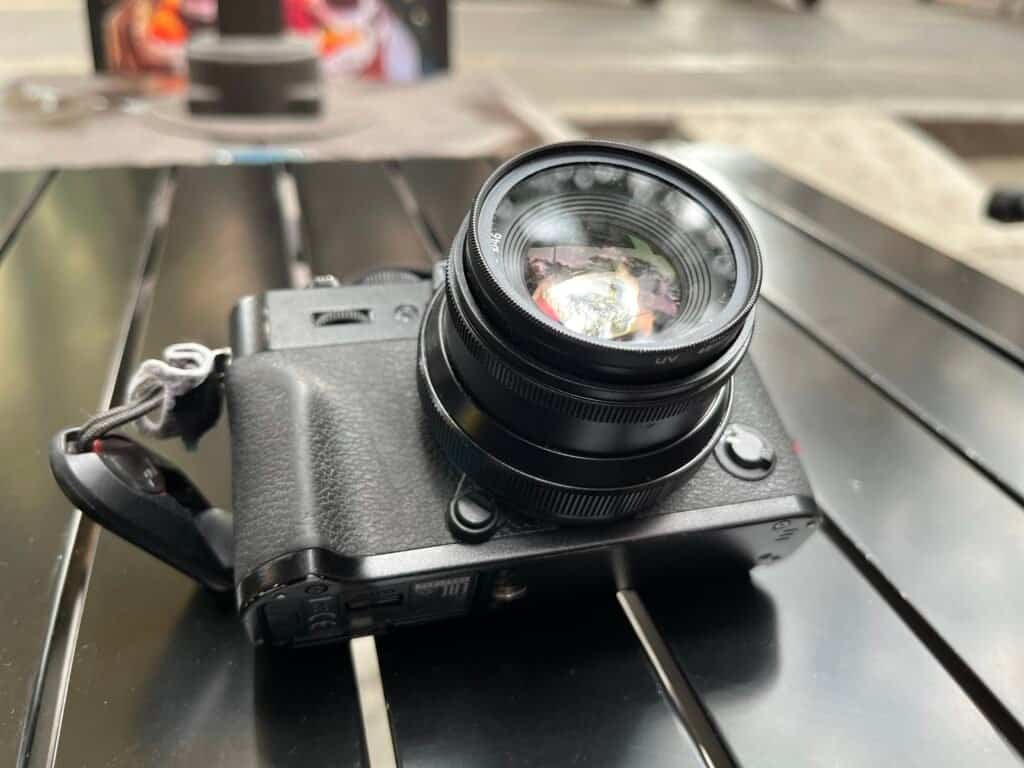
I have no idea why people are fussing about the 100 XVI when this little beauty is available, and with interchangable lenses. Save your money get this, and travel instead.
I prefer this camera over my small Sony a6400, which I gave away. Ricohs are hard to beat in ergonmics and more pocketable. My new (old) DSLR is much bigger and heavier. But X-T30 I have to aplogise, I was an idiot a few years agao. You are in your own cataergory of great cameras.
